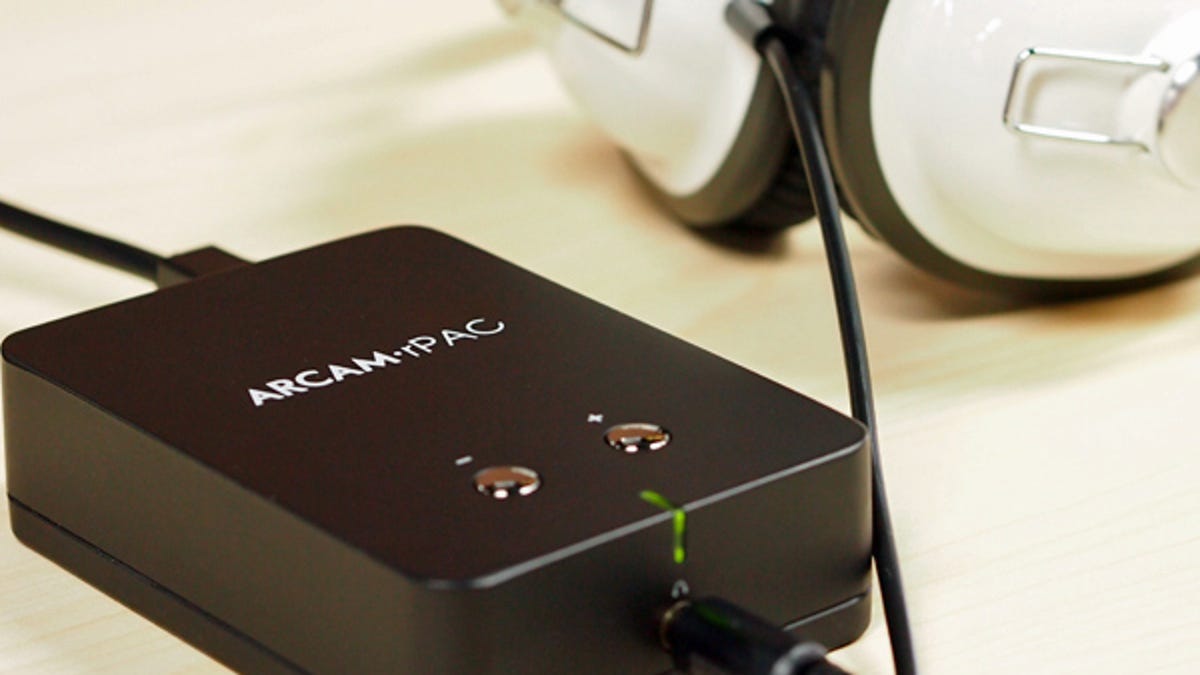Arcam rPac headphone amp and USB DAC hands-on
The Arcam rPac offers PC and Mac users an affordable upgrade to their onboard sound, complete with a dedicated headphone amplifier.

British audiophile brand Arcam appears to be making a greater effort to go mainstream these days with products such as the Arcam rCube iPhone dock and now, an entry-level USB DAC/headphone amplifier (amp) combo.
Meant as a smaller (and cheaper) alternative to the rDac digital-to-analog converter, this model only has a single USB input, with an asynchronous DAC. Audiophiles tend to prefer asynchronous USB inputs on DACs for the more consistent audio quality they're supposed to provide as the device creates the clock signals and not the (sometimes ancient) USB controller.
Design and features
If you own a pair of high-quality headphones, you would have realized that audio from typical laptop or PC soundcards can sound a little thin and lack detail. This is where USB DACs such as the Arcam rPac come in.
In the box, you get the rPac device itself, an A-type USB cable, a black velvet carrying pouch, and a standard RCA cable. That's pretty much all you need unless you happen to want to connect them to regular 2.0- or 2.1-channel computer speakers, which lack RCA inputs--an RCA-to-minijack converter should do the trick here.
As a USB DAC and headphone amp combo designed for those with high-quality music collections on their computers, the rPac is quite small and shouldn't really stand out on your desktop. The device looks relatively nondescript with a matte black metal chassis and rubber base. There are two chrome buttons on top, and a 3.5mm stereo minijack for a pair of headphones in front. A little LED also glows green when there's an audio signal detected and red otherwise. At the rear, you'll find a stereo RCA output that you can use to connect to powered stereo speakers such as the Audioengine A2s or a hi-fi setup. The main drawback of this device has to be its single USB input, which effectively disallows you from connecting any other music source.
Performance
USB digital-to-analog converters can be considered niche devices to the average music listener, and are typically used by audio enthusiasts to play back digital music from their computers on a hi-fi system. Headphone amplifiers, on the other hand, tend to be used by headphone audiophiles who need more power and better music detail.
We usually rely on our HeadRoom Total BitHead DAC/headphone amp for reviews and have to say that the Arcam measured up well. In terms of musical fidelity, both amps were about equal, although the rPac came across as slightly more refined in its tone. The high notes of a piano, hi-hat hits on a drum kit, and breathy female vocals came across as more pleasing to the ear, without any harsh artifacts. We also didn't hear much noise (usually present as a soft hissing sound) on the Arcam at higher volume levels, which lends some credence to the low total harmonic distortion rating in its specification sheet.
Testing the Arcam with a pair of Etymotic HF5 in-ear headphones as well as the Panasonic RP-HTX7 over-the-ears, we discovered its capability to perceivably widen the soundstage. Even the HF5, which has a more "in-your-head" sound signature, opened up a little, and sounded more transparent, too. The audio quality from this little black box was superb when compared with our consumer laptop soundcard, adding more detail to our music and also driving larger over-the-ear headphones quite nicely.
When used with some 2.1-channel PC speakers connected to the RCA inputs at the back, the results were less dramatic -- while music sounded clearer, the soundstage was just a little bit more expansive. We're sure you could achieve better results with a pair of powered audiophile-grade speakers such as the Audioengine A5+.
Conclusion
The Arcam rPac retails at $249, which is a fair amount of money if you're just a casual music buff. Those familiar with USB DACs would probably be aware of cheaper (Fiio makes popular budget models) or more capable alternatives (such as the Cambridge Audio DacMagic 100) on the market. The latter costs $100 more than the rPac but has four digital inputs.
However, those who appreciate (or tolerate) the simplicity of Arcam's latest DAC, will find lot to like here, especially if you want to coax some more detail from your digital music collection. Owners of high-end headphones will also get better performance from their gear with the added amplification. Of course, we'd still recommend some high-bit-rate compressed music or lossless files for the optimum listening experience.
Via CNET Asia